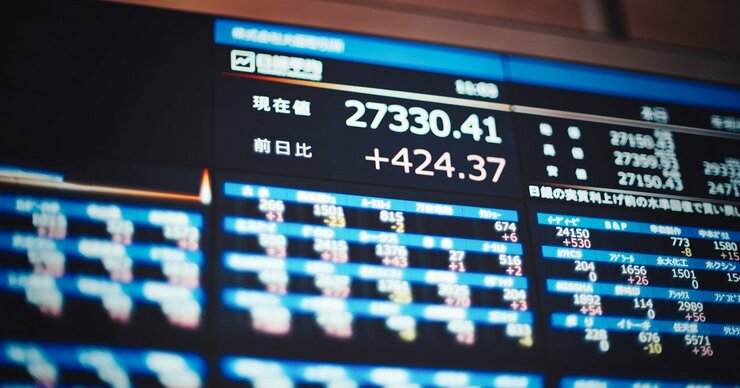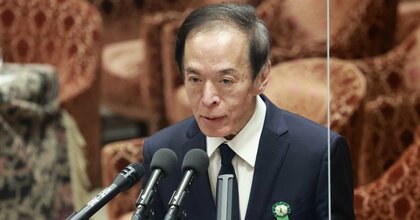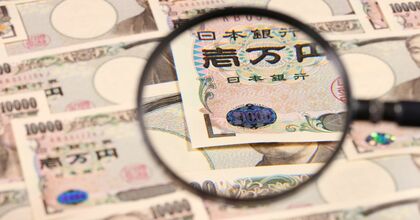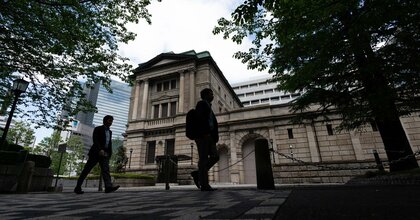Stronger yen amid easing worries
Following on its surprise policy change in December, we expect the BOJ to proceed with further policy normalization in the coming months. This assumes a further easing of global banking concerns and continued solid wage dynamics in Japan, which should drive medium-term yen appreciation.
First, global banking concerns, symbolized by U.S. regional bank failures and Swiss bank mergers, will likely linger for some time and could weigh on growth through tighter credit conditions over the long run. However, our baseline scenario does not envision this developing into a systematic global banking crisis because the banking system collectively has substantial capital, policymakers have been quick to open liquidity spigots when needed, and we see few issues with asset credit quality.
We therefore look for the global monetary tightening cycle to continue a little longer amid extended high inflation and still-tight labor conditions, although we now appear closer to a terminal level. More specifically, we do not expect rate cuts by the Federal Reserve later this year, as is currently priced in by the U.S. money markets. If such rate cuts come to pass, they could derail prospects for the BOJ’s policy normalization, in our view.
Further easing of global banking concerns and a resultant rise in front-end U.S. yields (i.e., pricing out the Fed cuts) could admittedly put some upward pressure on the dollar-yen rate in the near term. However, a lower medium-term growth trajectory due to tighter lending conditions suggests that such moves will be limited to a temporary unwind of the recent risk-off positions. Hence, we would continue to look for BOJ policy moves to restore downward pressure on the currency pair.
Second, record outcomes of the Shunto spring wage negotiations in Japan beat most market expectations this year. According to JTUC (Japan Trade Union Confederation) Rengo’s third aggregate estimate, unions and employers agreed to hike wages by 3.7% in 2023, the largest increase in three decades. Importantly, even small and medium-sized enterprises (SMEs), which face greater negative terms of trade shocks than larger companies due to their higher import concentration, also agreed to a substantial wage increase of 3.42%.
These negotiated outcomes are largely reflected in actual wages from the second quarter. With Japan’s inflation expected to top out as the base effects from last year’s sharp rally in commodity prices and the yen’s appreciation reverse, real labor income growth is likely to turn positive going forward.
Hence, even if the BOJ opts to wait for additional evidence to ensure the sustainability of solid wage growth (e.g., another year of strong union wage agreements next spring) before beginning a full-fledged cycle of short-term policy rate hikes, we believe the underlying positive wage dynamics will likely suffice for it to scrap YCC.
This inflexible policy framework has long been criticized for its side effects, such as distorting market function and amplifying yen weakness, as observed last year. Those side effects drew public backlash amid heightened import inflation and spurred the Ministry of Finance (MOF) to intervene in the fall to stop a further plunge in the currency.
With easing global banking concerns and positive wage momentum in Japan, we expect the BOJ to scrap the YCC framework from its June meeting, followed by the end of the negative interest rates policy (NIRP) at the September meeting. The BOJ’s policy normalization over the coming quarters should exert upward pressure on the yen, causing it to appreciate by as much as 5%, according to our estimate.
Additionally, improvements in Japan’s current account on the back of lower energy prices, as well as a rapid recovery in inbound tourism helped by the weak yen and the border reopening since last October, should provide an additional boost to the yen over the medium-term. Subdued merger-and-acquisition outflows by Japanese companies (i.e., foreign direct investment) and limited appetite for investment without hedgings against foreign exchange risks amid yen-appreciation concerns also point to limited yen-selling pressure.
In sum, we expect the yen to strengthen towards 120-125 per dollar in the year ahead.
Stronger yen amid crisis
On the other hand, if the recent global banking concerns were to lead to a full-blown crisis, contrary to our baseline assumption, we believe the yen should appreciate by even more. A banking crisis would likely force aggressive rate cuts by overseas central banks amid an imminent recession and falling inflation.
Such a deterioration in global economic conditions and dovish turn by other central banks would close the near-term window of opportunity for BOJ policy normalization (and could even open one for easing), in our view.
The BOJ has an institutional memory of its past normalization processes being derailed by negative global developments. In both the 2000 and 2006 hiking cycles, the BOJ was forced to unwind its tightening soon after it began as overseas central banks turned to ease amid deteriorating fundamentals. New Governor Kazuo Ueda was on the BOJ Board during the 2000 hike and voted against the move, suggesting that an Ueda-led BOJ could take a cautious stance with regard to any negative global developments.
Under that scenario, any negative currency impact from such a dovish shift by the BOJ would likely be overwhelmed by a much sharper decline in global yields. Tightening domestic overseas yield differentials and a global equity selloff could drive an even stronger bid for the yen than in our baseline scenario, posing downside risks to the dollar-yen pair moving below 120.
Shinichiro (Shin) Kadota is the FX Strategist at Barclays in Tokyo. Shin joined Barclays in 2008 and has worked in various teams covering Japanese banks, foreign bond investment for institutional investors, foreign exchange, and yen-rates markets. He graduated from UCLA in 2008 with a degree in International Economics. The views expressed here are his own.











